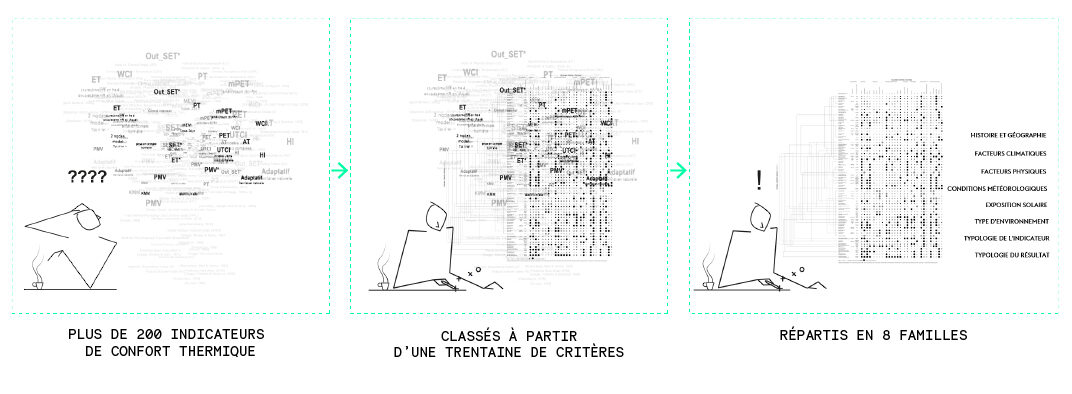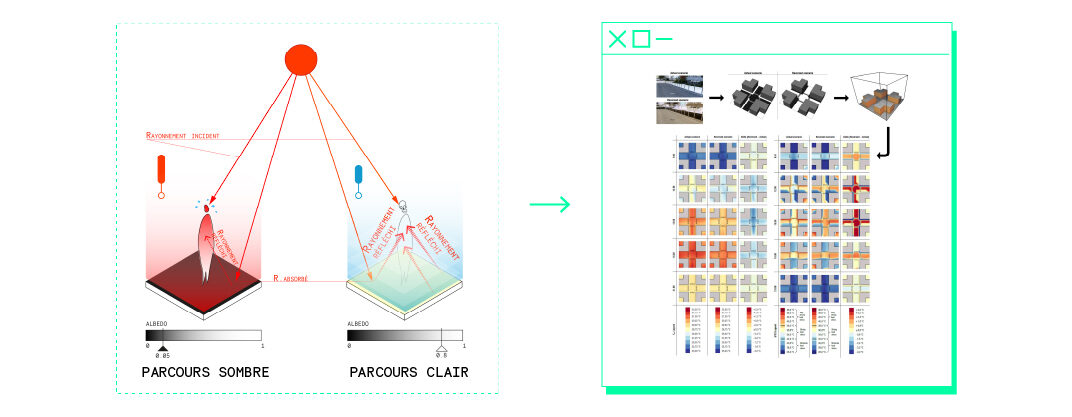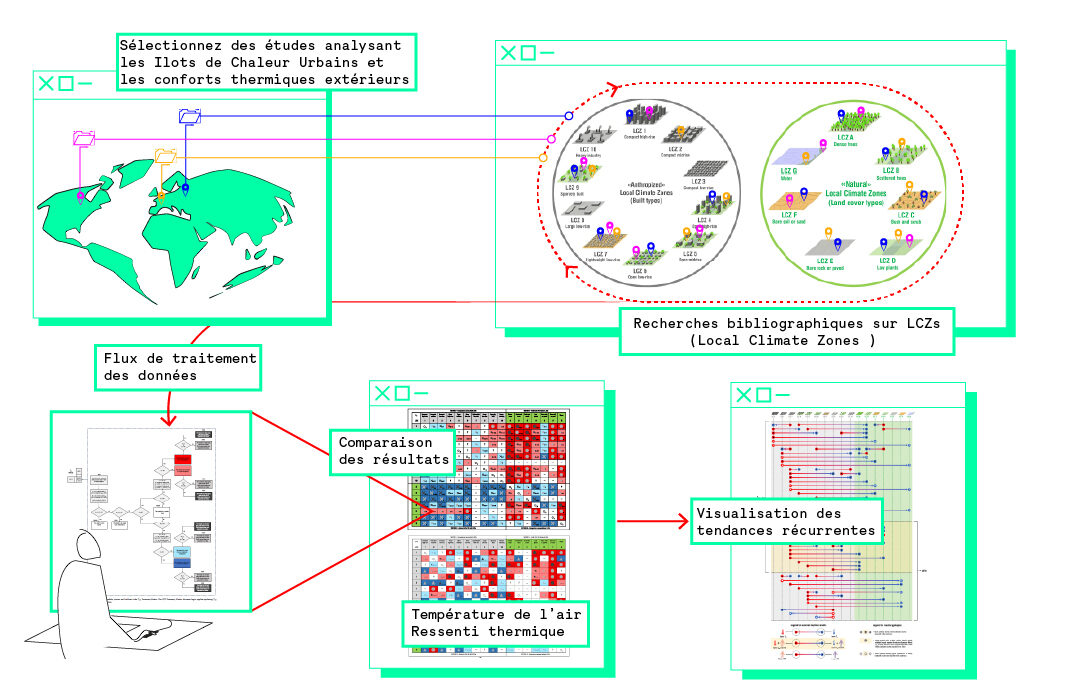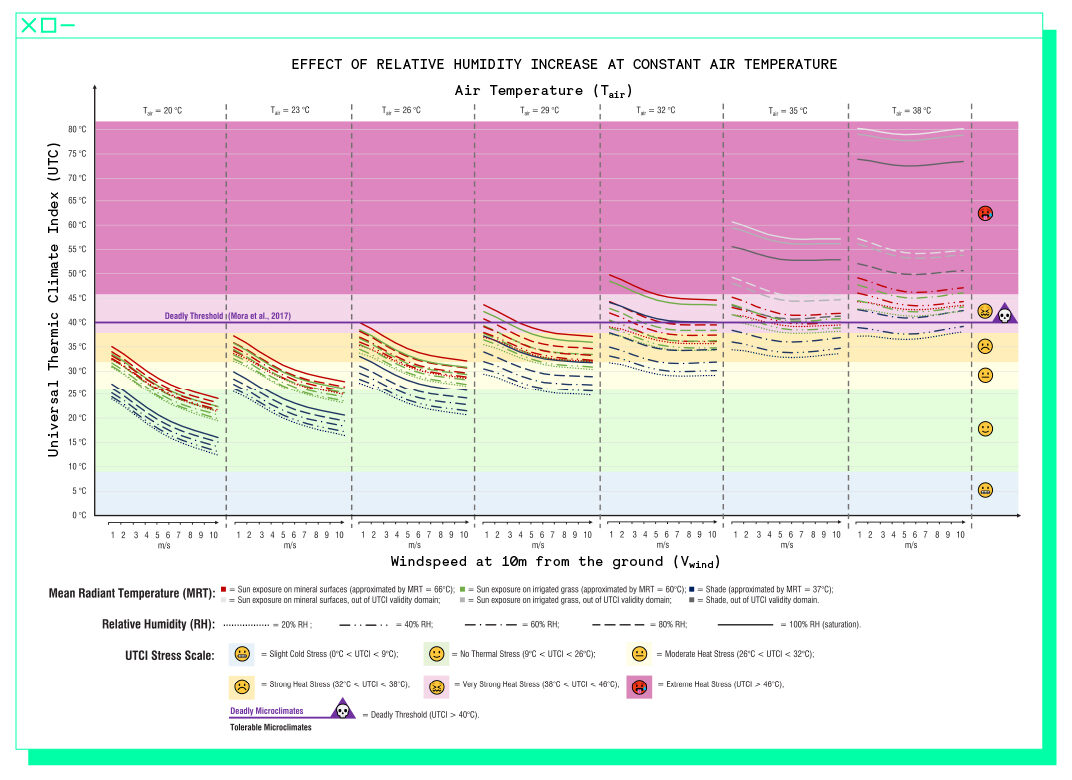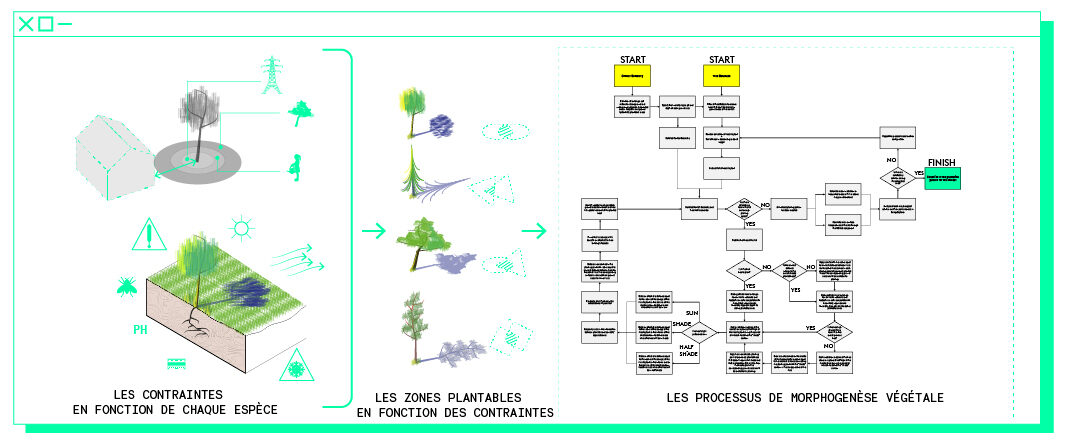MESH 2C
Research
2025

The MESH 2C (Morphology, Environment, Sustainability and Human comfort – City Climate) research project aims to understand how urban forms, materials, vegetation and ventilation affect urban climate conditions. A set of tools and methodologies has been created to combat heat islands and improve outdoor thermal comfort in the context of climate change. Studies conducted as part of this project have shown that trees and their shade are the most effective elements in solving these problems.
Consequently, an algorithm has been developed to help plan urban vegetation, choosing species and their locations according to their needs and their effects on the local microclimate.
The project focused on how cities can adapt to summer heat waves by exploring several aspects. First, it clarified the conceptual differences between reducing the urban heat island (UHI) and improving outdoor thermal comfort (OTC). Then, it developed a methodology to identify the most suitable thermal comfort indicators and the appropriate software to evaluate them, selecting UTCI as the reference indicator and ENVI-met as the preferred software.
Simulations were carried out to evaluate the performance of different urban paving strategies, highlighting the asynchronous impact of albedo on the UHI and UTCI.
An analysis of the relationships between urban morphology, the urban heat island and outdoor thermal comfort was carried out, showing that the presence of trees is a crucial common element in reducing the UHI and improving the OTC. In addition, a study of the UTCI formula revealed the importance of various climatic factors on thermal comfort, highlighting in particular the effectiveness of reducing the average radiant temperature to mitigate heat stress.
In this sense, the importance of tree shade has been highlighted as one of the most effective urban levers for addressing heat issues, although its effectiveness depends on various factors such as context, tree species characteristics and location.
To optimize the performance of tree planting strategies, a database and a tree-lined space morphogenesis algorithm have been developed. The results have shown that the appropriate selection and location of tree species are essential to maximize the effectiveness of planting strategies in terms of temperature reduction.
An analysis of the relationship between urban morphology, the urban heat island effect and outdoor thermal comfort was carried out, showing that the presence of trees is a crucial common element in reducing the UHI and improving the OTC. In addition, a study of the UTCI formula revealed the importance of various climatic factors on thermal comfort, emphasizing in particular the effectiveness of reducing the average radiant temperature to mitigate heat stress.
In this regard, the importance of tree shading has been highlighted as one of the most effective urban levers to address heat-related issues, although its effectiveness depends on various factors such as context, tree species characteristics, and location.
To optimize the performance of tree planting strategies, a database and a morphogenesis algorithm for treed spaces have been developed. The results showed that the appropriate selection and placement of tree species are essential to maximize the effectiveness of planting strategies in terms of temperature reduction.
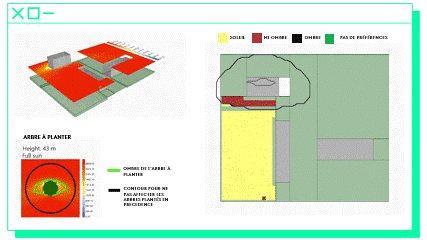
Call for proposals
Ademe, monitored by Elodie Briche
Team
Ecole des Ponts et Chaussées, Echoes.Paris, Paris & Métropole Aménagement, Soleneos
AFB Team
Matteo Migliari, Loïc Chesne, Julien Despax and André-Marie Dogbo
AFB alumni : Rémi Babut, Camille De Gaulmyn and Adrien SimonSchedule
Since 2020
